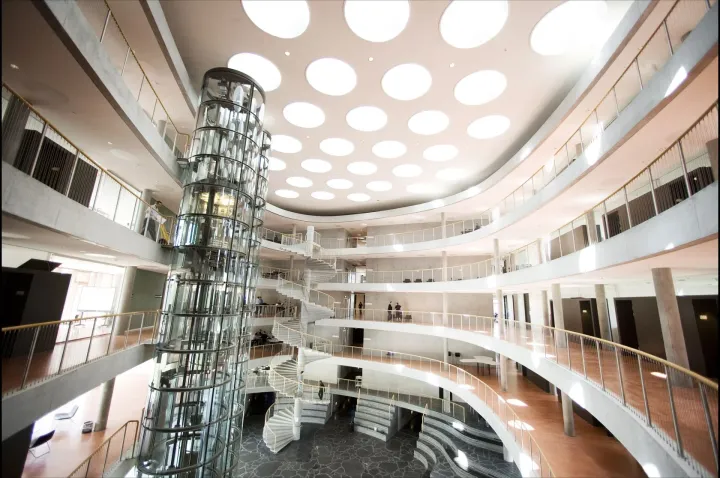Determining the Rental Period for your Lease Agreement in Denmark
Understanding rental periods in Denmark is crucial for stability and legal compliance in a market known for strong tenant protections. Learn the benefits of one-year leases and other options suited for diverse needs.

Navigating the rental market can be a daunting task, especially in a country known for its strong tenant protections and unique leasing customs. Whether you're a seasoned host or about to list your first property in the hopes of finding a good tenant, understanding the typical rental periods and what they mean for tenants is crucial.
The rental market in Denmark has shown robust activity. Rising interest rates and high property prices have made renting a more attractive option for many, especially in major metropolitan areas like Copenhagen. This trend is reflected in the high occupancy rates and increasing demand for rental properties. What this means is, rentals (including room rentals) are now particularly popular among all different categories of people living in Denmark!
In this post, we will explore the most common rental periods in Denmark, from long-term leases to more flexible arrangements suited for students or temporary workers.
Renting out a room in Denmark? Make sure you list it on Hemavi!
What is a rental period?
A rental period refers to the duration of time agreed upon between a landlord and a tenant during which the tenant has the right to occupy and use the rented property. This term is typically specified in a rental agreement or lease and can vary widely depending on the type of property and the agreements made between the parties involved.
For residential properties, rental periods can range from short-term (such as a few months or even weekly) to long-term (commonly one year, but often extending to multiple years). In commercial real estate, leases may last several years, reflecting the significant investment in the location made by businesses.
The rental period determines not only the length of time the tenant can stay in the property but also when the lease will be reviewed for renewal or termination. This is important for both tenant stability and for landlords planning property management. The specifics of what happens when the rental period ends, whether the lease automatically renews, and under what conditions the lease might be renegotiated, are typically outlined in the rental agreement.
What is a rental agreement or lease?
A rental agreement or lease is a legally binding contract between a landlord and a tenant that outlines the terms and conditions under which the tenant can rent property from the landlord. This document typically includes key details such as the duration of the rental period, the amount of rent to be paid, the frequency of payments, and the responsibilities of both the landlord and the tenant regarding the maintenance and upkeep of the property.
What is the most common rental period in Denmark?
In fixed-term leases, the most common rental period for residential properties is typically one year or longer. Danish rental agreements often start with a one-year lease, which may continue on an indefinite basis unless terminated by either party with due notice. The one-year rental period is the most common in Denmark due to a combination of factors that reflect both legal frameworks and societal norms, including:
- Tenant Security and Stability: Denmark has strong tenant protection laws designed to offer stability and security to tenants. A one-year lease provides a stable period for both parties, giving tenants a secure place to live without the immediate worry of having to relocate, and landlords a guaranteed rental income for the duration.
- Regulatory Environment: Danish rental law encourages rental agreements of at least one year to support residential stability. This duration is often seen as a balance between flexibility and security.
- Market Expectations: There is a cultural expectation and preference for not frequently changing living arrangements. Longer leases fit into a societal framework where stability in one's living situation is highly valued.
- Economic and Practical Reasons: Longer leases reduce the costs and efforts associated with tenant turnover for landlords. For tenants, it provides enough time to settle in an area, which is particularly important in urban settings like Copenhagen, where relocating can be costly and cumbersome.
What are some other common lease durations for rentals in Denmark?
Short-term Leases
These are often used for temporary accommodations, such as for students, tourists, or business professionals on short assignments. Short-term leases can range from a few months to less than a year.
Indefinite Leases
Many rental agreements, after the initial fixed-term period (often one year), automatically convert into indefinite leases. These do not have a specified end date and continue until either the tenant or landlord terminates the agreement under the conditions set forth in the lease.
Three or Five-Year Leases
For certain types of properties, especially those that are newly renovated or newly constructed, landlords may require a minimum lease period of three or five years. This is less common but is used to ensure a return on investment for significant improvements or new construction.
Variable Leases
In some cases, especially in shared housing or student accommodations, leases may also be structured on a semester basis or aligned with academic calendars. An example would be the periodic rental agreement. This arrangement does not have a set end date and typically operates on a month-to-month basis; either party can terminate the agreement with proper notice, usually 30 days.
How do I decide how long to rent my room in Denmark?
Purpose of Rental
Determine why you are renting out your room. If it's for additional income, a longer-term rental might be more stable and reduce the frequency of tenant turnover. For flexibility, especially if you might need the room back or plan to sell the property, a shorter-term might be preferable.
Tenant Demand
Consider the demand in your area. In cities with a high influx of students or temporary workers, such as Copenhagen or Aarhus, shorter rental periods may be more in demand. Conversely, in residential areas where families and long-term residents are more common, longer leases could be more attractive.
Market Rates
Research local rental market trends. Longer leases might allow you to lock in a rental rate, which can be advantageous in a rising market. In a stable or declining market, shorter leases might give you more flexibility to adjust rental prices.
Management Effort
Consider the effort required to manage the rental property. Longer-term leases reduce the effort and cost associated with finding new tenants regularly, which could be a significant advantage if you prefer less frequent tenant interactions.
Legal Regulations
Familiarize yourself with Danish rental laws, which provide strong tenant protections. Understanding these can help you decide on a rental period that aligns with legal norms and your responsibilities as a landlord.
Conclusion
Deciding on the length of time to rent out your room involves a thoughtful consideration of several factors, including your personal circumstances, market demand, and legal regulations. Whether you aim for the stability of a long-term income or the flexibility to reclaim your space as needed, your choice must align with your lifestyle and investment goals.
Whether you're a first-time landlord or an experienced property owner, understanding these aspects of the Danish rental market will help you make informed decisions that align with both your financial goals and legal obligations. By embracing the complexities of the rental market and adapting to its demands, you can ensure a rewarding and successful experience in one of the world's most tenant-friendly countries.
If you want to rent out a room in your apartment or house and love a smooth rental process, you can create a free room ad on Hemavi and avoid unnecessary stress when finding the best roommate.




Comments ()